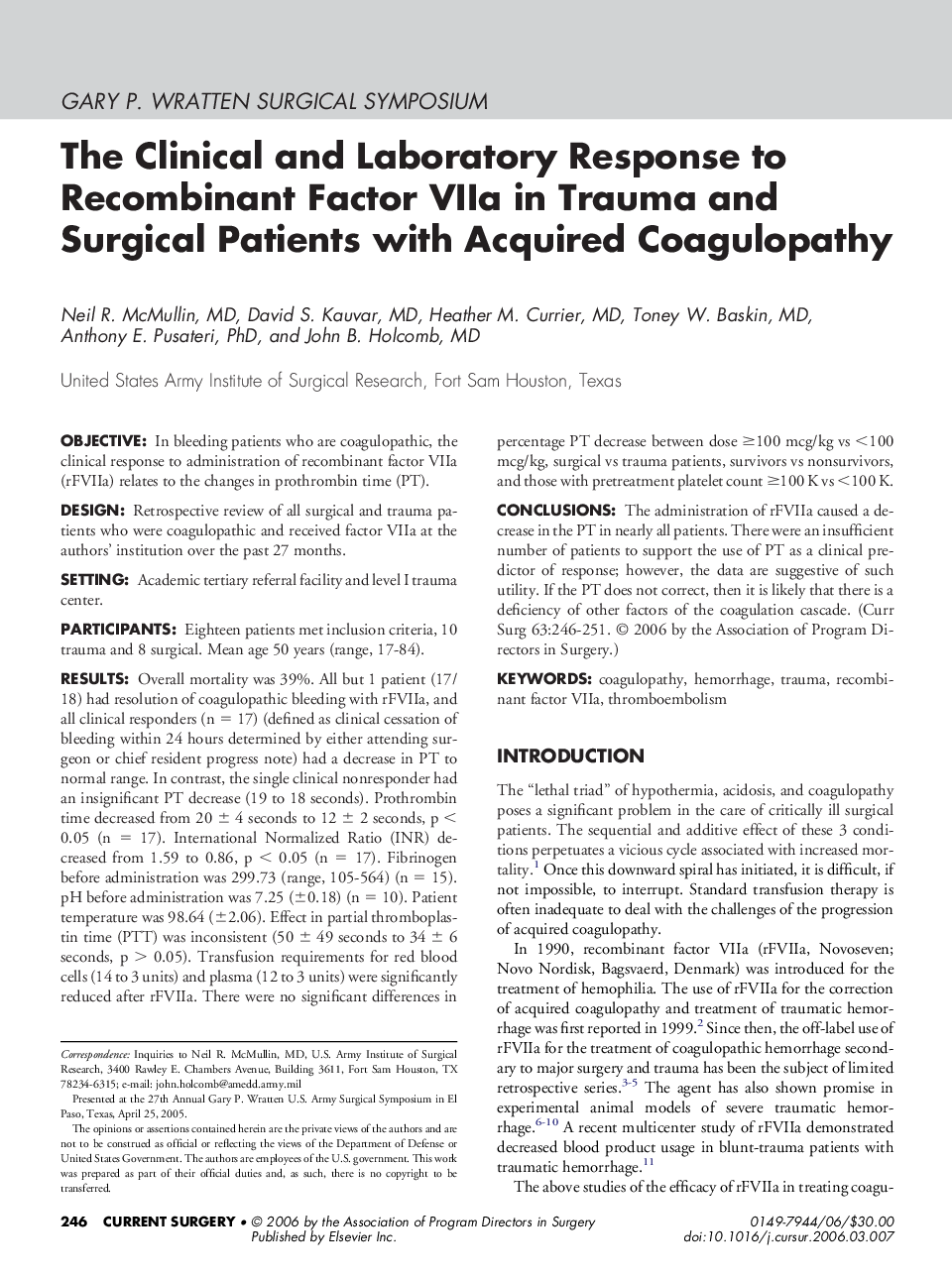| Article ID | Journal | Published Year | Pages | File Type |
|---|---|---|---|---|
| 4284365 | Current Surgery | 2006 | 6 Pages |
ObjectiveIn bleeding patients who are coagulopathic, the clinical response to administration of recombinant factor VIIa (rFVIIa) relates to the changes in prothrombin time (PT).DesignRetrospective review of all surgical and trauma patients who were coagulopathic and received factor VIIa at the authors’ institution over the past 27 months.SettingAcademic tertiary referral facility and level I trauma center.ParticipantsEighteen patients met inclusion criteria, 10 trauma and 8 surgical. Mean age 50 years (range, 17-84).ResultsOverall mortality was 39%. All but 1 patient (17/18) had resolution of coagulopathic bleeding with rFVIIa, and all clinical responders (n = 17) (defined as clinical cessation of bleeding within 24 hours determined by either attending surgeon or chief resident progress note) had a decrease in PT to normal range. In contrast, the single clinical nonresponder had an insignificant PT decrease (19 to 18 seconds). Prothrombin time decreased from 20 ± 4 seconds to 12 ± 2 seconds, p < 0.05 (n = 17). International Normalized Ratio (INR) decreased from 1.59 to 0.86, p < 0.05 (n = 17). Fibrinogen before administration was 299.73 (range, 105-564) (n = 15). pH before administration was 7.25 (±0.18) (n = 10). Patient temperature was 98.64 (±2.06). Effect in partial thromboplastin time (PTT) was inconsistent (50 ± 49 seconds to 34 ± 6 seconds, p > 0.05). Transfusion requirements for red blood cells (14 to 3 units) and plasma (12 to 3 units) were significantly reduced after rFVIIa. There were no significant differences in percentage PT decrease between dose ≥100 mcg/kg vs <100 mcg/kg, surgical vs trauma patients, survivors vs nonsurvivors, and those with pretreatment platelet count ≥100 K vs <100 K.ConclusionsThe administration of rFVIIa caused a decrease in the PT in nearly all patients. There were an insufficient number of patients to support the use of PT as a clinical predictor of response; however, the data are suggestive of such utility. If the PT does not correct, then it is likely that there is a deficiency of other factors of the coagulation cascade.
